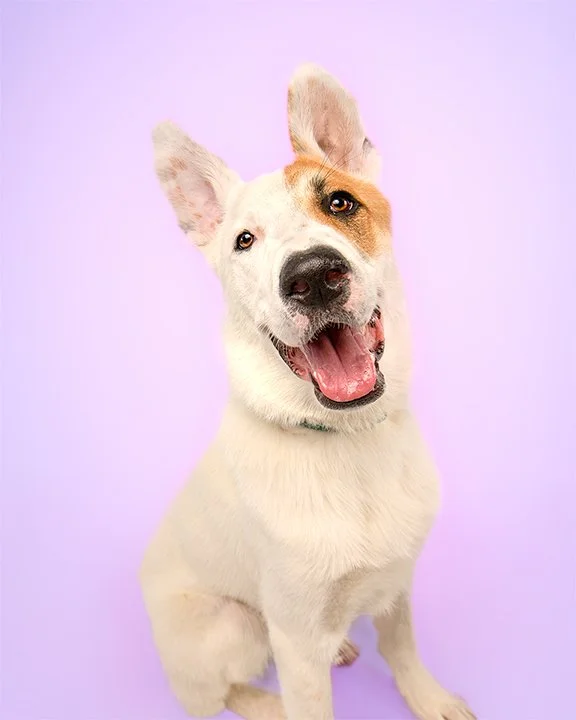Dogs Aren’t Stubborn. They’re Just 2-Year-Olds with Fur.
If you’ve ever found yourself thinking, “She knows better,” or “He’s being stubborn,” you’re not alone. We humans often misjudge our dogs’ abilities by aiming too high or too low. Let’s break down the science about what dogs are really capable of, mentally and emotionally.
The Challenge: Aiming too High or Too Low
It’s easy to over-humanize, believing our dogs are capable of adult-level reasoning: holding grudges, acting out of spite, feeling shame when we come home and they “look guilty.” Someone once told me their puppy peed on the floor “to get back at them.” Or how often have you heard someone say, “He knows what he did,” after scolding their dog for something that happened hours earlier.
But dogs don’t operate with that kind of complex moral reasoning, memory, or future planning. Logic, guilt, a sense of past and future, abstract thought…these are all functions of the human frontal lobe, which dogs simply do not have in their anatomy. Without frontal lobes, dogs are much more limited. They live in the now, 100% of the time. They feel emotions deeply, but they can’t link past actions with future consequences, the way humans can.
On the other end of the spectrum, some people underestimate dogs entirely, treating them more like programmable machines than sentient beings. In this view, dogs are expected to obey without question and perform perfectly on command, without regard for their emotional state. This mindset often ignores the fact that dogs have feelings, motivations, and sensitive nervous systems. When we focus on compliance instead of communication, we miss the chance to truly understand and support our pups.
Science shows us the truth is right in the middle: dogs are basically permanent toddlers. They never grow up like human children do—but they also never stop feeling, learning, and needing connection. Let’s unpack what that means in the day to day, and how this simple reframing can transform your relationship.
Dogs Are Toddlers, Not Furry Adults
Research by Dr. Brian Hare, co-author of The Genius of Dogs and founder of the Duke University Canine Cognition Center, uncovered that dogs share many cognitive, emotional and social traits with human toddlers between 2 and 3 years old.
In fact, dogs perform similarly to young children in social intelligence tests, like following a pointing finger to a destination. Dogs can pass these tests effortlessly, even though other highly intelligent animals like chimpanzees often fail. It shows how dogs have evolved to be cooperative with humans, reading and interpreting human signals that other animals living in the wild simply aren’t exposed to.
Just like toddlers, dogs:
· Act in self-interest almost all the time
· Struggle with emotional regulation
· Aren’t capable of complex motives like revenge, guilt or shame
· Do best in structured, routine-oriented environments
· Learn best through social cues and repetition
· Thrive when they have emotional stability and safety
So when your dog barks at the mail carrier again, or ignores a cue in a moment of stress…it’s not disobedience. It’s dysregulation. Just like a toddler melting down before nap time, your dog isn’t being bad, they’re overwhelmed.
Myth vs. Reality – Reframing Common Misconceptions
Myth: “He should know not to jump on guests—I’ve told him ‘no’ so many times!”
Repetition alone doesn’t teach emotional regulation—he’s likely overwhelmed and needs proactive support, not just correction.
Reality: “He’s overexcited, like a toddler who can’t help but squeal when grandma arrives.”
Helping him succeed means managing the environment, not expecting impulse control he doesn't yet have.
Myth: “If she doesn’t sit when I say it, she’s being defiant.”
Noncompliance is often a sign of stress, confusion, or poor communication—not a personality flaw.
Reality: “She might be scared, distracted, or unsure.”
By tuning into her emotional state, we can create conditions that make cooperation feel safe and rewarding.
Myth: “He peed on my shoes because he was mad at me.”
Dogs don’t act out of revenge—they react to unmet needs or emotional overwhelm.
Reality: “He might be stressed or insecure.”
This behavior is a signal to assess his comfort and predictability in the home environment.
Myth: “She chewed the couch to punish me for leaving.”
What looks like spite is more likely an anxious coping mechanism.
Reality: “She was likely anxious, bored, or dysregulated, like a toddler left alone without anything to do.”
Offering structured outlets for her energy and anxiety can prevent destructive behaviors.
Myth: “He looks guilty. He knows what he did.”
That “guilty look” is a response to your cues right now, not an admission of wrongdoing for something that happened earlier.
Reality: “He’s responding to your tone and body language, not reflecting on past events.”
Reading human emotions in real-time is different than understanding cause and effect the same way we do.
Myth: “She didn’t respond, so she must be blowing me off.”
Dogs aren’t capable of calculated disregard, but they do shut down or freeze when unsure or over their stress threshold.
Reality: “She may be over threshold or unclear about what you’re asking.”
Rather than escalating, it’s more effective to reset and reconnect.
Myth: “He should be fine at the dog park by now…we’ve gone plenty of times.”
Exposure alone doesn’t equal comfort—emotional readiness takes time.
Reality:“He might still be overwhelmed. Like a toddler at a birthday party, too much stimulation can lead to a meltdown.”
Monitor his signals and prioritize smaller, more predictable interactions if needed
Myth: “She growled so she needs to be corrected immediately.”
Punishing growling can suppress valuable communication, raising cortisol and adrenaline in the process, which only serves to make the dog more anxious.
Reality: “Growling is communication. Like a toddler saying ‘no,’ it’s a signal of discomfort.”
Instead of shutting it down, we can treat it as useful feedback and adjust our own approach accordingly.
The Science Behind the Toddler Framing
Dr. Brian Hare and his team at the Duke Canine Cognition Center have shown that dogs’ social intelligence is a result of both evolution and domestication. Unlike wolves, who never see human gestures in their day-to-day, dogs have spent 10,000+ years living and cooperating with humans. So much time in fact, that now they’re literally wired from birth to follow our gaze, gestures, and facial expressions. Just like a toddler growing up in their parents’ care, dogs are constantly exposed to these stimuli. They study and respond to them, and associate meaning with them.
In his book The Genius of Dogs, Dr. Hare writes: “Dogs aren’t smarter than chimpanzees. But they’re smarter at understanding humans.” That’s “survival of the friendliest” in action (another Dr. Hare soundbite). Dogs are attuned to your tone, energy, and presence – not logical rules, processes, or rationale. This understanding helps us trade judgment for empathy, and performance for partnership. It’s a mindset shift that changes our expectations, approach, daily practice and even our tiniest interactions.
If you’d like to dive deeper, here are a few articles highlighting the underlying research:
Dogs follow human pointing gestures to find hidden food, just like toddlers do—something even chimps struggle with (American Psychological Association).
Studies show dogs have a vocabulary roughly equivalent to a 2–2.5 year old child, especially when language is tied to objects or routines (Chaser the Border Collie).
Dogs have evolved to relate to humans with the same social-emotional sensitivity and attachment behaviors found in human toddlers, enabling a uniquely strong cross-species bond built on mutual understanding and trust (Scientific American).
Partnership, Empathy, and Trust: The Toddler Lens in Action
At Resilient Rover, our PET Framework—Partnership, Empathy, and Trust—is built with “dogs are toddlers” in mind:
Partnership means meeting your dog at their developmental level. Not as a subordinate, but as a teammate who needs guidance, not control.
Empathy means seeing behavior as communication. Asking, “What is my dog feeling?” instead of “Why aren’t they obeying?”
Trust grows when we support our dogs through stress, celebrate micro-wins, and replace frustration with curiosity.
When you understand your dog as a permanent toddler—sensitive, easily overwhelmed, motivated by simple wants & needs, not stubborn, not defiant, just young in their way of being—you give yourself permission to stop trying to “fix things” and start learning to guide and co-regulate. You become less of a drill sergeant, and more of a source of emotional security. And your dog becomes less reactive, more resilient, and more connected. Shifting your mindset from obedience to partnership may be the most powerful training tool you’ll ever use.
Further reading/watching:
The Genius of Dogs by Dr. Brian Hare and Vanessa Woods
The Dognition Project—a citizen science initiative led by Dr. Hare
Inside the Mind of a Dog documentary on Netflix












